
Thank you! Your comment has been submitted successfully. You should be able to view your question/comment here within a few days.
Error submitting comment. Please try again momentarily.
- All Info
- Reviews (41)
- Q & A (0)
- Videos (2)
- Photos
Redline Trailer Bearings Races Seals Caps - 2729
- Races
- Standard Races
- 5200 lbs Axle
- 3.000 Inch O.D.
- Bearing 2788
- Redline
- Race 2729
Race provides smooth surface for bearing to roll on inside of trailer hub. Works with 2788 bearing. Replacement part uses industry-standard number.
Features:
- Outer diameter: 3.000"
- Matching bearing (sold separately): 2788
2729 Replacement Trailer Hub Race
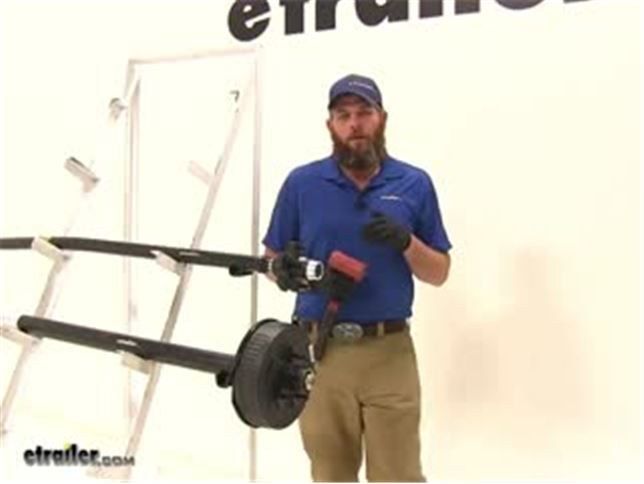

Videos are provided as a guide only. Refer to manufacturer installation instructions and specs for complete information.
Video Transcript for Trailer Bearings Races Seals and Caps Rebuild
Speaker 1: Today we're going to take you through the rebuild process on a couple of hubs. We've got an idler hub, and here we've got a hub and drum assembly. Works with electric rigs, but this can also work for just standard discs, if you've got a disc brake style setup.Basically what we're going to show you is how to get all of the bearings out. How to remove the seal. How to remove the race's if they're damaged, then get them replaced in the proper manner. We'll show you how to use an easy loop hub, which we have here.The first thing we are going to need to do is, get the grease cap off the end.
It can have either a rubber plug in it like this one does, or it can be a solid metal cap.These are pressed fit in there, basically by tapping on them on the back side. To remove them, a deadbolt hammer is typically what we're going to use. We're just going to start tapping as we go around. You'll see a little separation start right here, and slowly it'll work it's way off.Now the next step's going to vary a little bit depending on your axle setup. Do you see this is going to have a keeper that goes around the nut.
And that prevents that from being backed off, or removed. A lot of times you'll have a castle nut, which will have just little tabs that stick off, and there will be a cotter pin that passes through it. Just depending on your application, you need to get the keeper for the nut off. This style we just kind of pry out. A cotter pin you would just remove of course.Once we have that off ...
We'll start to take off the nut here, and the washer that's in behind it. Now yours should look a whole lot more dirty than this. There should be a lot of grease packed in, and through the hub, this one's brand new. We thought it'd be nice to show you the components before the grease was on .. Of our washer that comes off.And then here we're going to have our outer bearing.
Continue to pull that. We're gonig to have our inner bearing here. That sits in the backside of the hub. And we didn't put it in yet, we will show you how to put it in. But a seal would typically be covering the backside here. We'll show you how to use a seal removal tool, or another tool. To get that pried up and out. To get an access to that inner bearing.Now for a drum style like this, that process for disassembly is going to be just the same. One thing to keep in mind if you're using a disc brake setup. You'll have to remove the caliper before the disc is going to come off.Now once we have the spindle exposed, as we said this is going to be really greasy. We want to get all the grease removed, and the first thing we'll do is inspect it. We want to make sure that it looks just like what we have here. Everything's nice and smooth. We don't see any kind of discoloration, or any marring on the metal. Indicating that our bearing's got hot.If you do have any of those symptoms, at this point it's time to replace those bearings. You don't want to repack them. Get new bearings, and put in there. You might have a bearing that's come apart in here. Another surface to ensure is in good condition, is where your seal is going to go. That helps seal all the grease inside of our hub. With a damaged or broken seal, that grease is going to seep out. Either out of the hub, or in this case into our brake assembly.Now if your axle has brakes, we're also going to check the disc. Make sure it doesn't have any issues, or your hub. And this is going to be a hub and drum assembly. The brakes are going to ride on this machine surface. You're going to check that for signs of excessive heat, discoloration, or cracking. And this is our magnet surface. We'll check that surface for the same issues.Now inside the hub regardless if it's a disc brake, it's a drum brake like this. Or just a standard idler style hub. You're going to have an outer race. Would be right here, it's a small tapered piece of metal your bearing sits in, and rotates on. That's basically the outer portion of the bearing.You have the same thing here on the backside. This is called the inner race. Now if those show any signs of wear, overheating, or cracking. Those are also something we'll need to replace, which we'll show you how to do in just a minute.Now, with your brake assembly exposed, if you do have electric brakes like we have here. It's a good idea to check all the components for wear, cracking, maybe missing pieces. Check your pad thickness to make sure those are in good shape. Basically if you have a non working brake assembly and you put everything back together, you're just going to have to take it apart and do it all over again to get back to the brake assembly. This gives you a really good option to be able to change them out.And most applications are going to use a four, or maybe a five bolt flange to hold them in place. And you'll just remove the lock nuts, or sometimes you'll have a hex nut with a lock washer. You want to remove those, and then simply slide your assembly off after you cut the wiring.The friction material itself should also be checked for any kinds of cracking, or overheating. If you have any grease inside the system at all, it's likely it's gotten on those pads. It's a good idea to get those changed. Now as far as the removal of the races go, it's going to be just the same whether we're using an idler style hub like we have here. A drum brake like we have here. You can basically see where the idler is, here in the middle of the hub. It's going to go all the way around there, and we just have this extra material here to provide our braking surface.Now if you're doing a disc brake style job again, it's going to be just the same here with the races living inside of the actual hub portion. You'll just have the discs there for the brakes to make contact. We're going to use this little bit smaller one, it's a little bit easier to manage to show you how to get these out. We've talked about where the races are. The outer here, the inner being closer to the inside, but on the backside of the race there's a little lip. That lip's meant to stick out just a little bit further than the hub, and provide us an area to put our tool on, and help to drive that out.If you look all the way through there on that inner race, you'll see that little lip that sticks out just from the hub slightly, and it gives us enough area to use our tool on. Now generally to remove these you're going to use a punch, similar to this. Some guys will use a screwdriver. Or a piece of pipe. If you have a piece of pipe that's small enough to fit inside of that diameter, you can take that down through and allow it to rest on that lip.Use our punch, and then just need a hammer. And we'll start working that out. We're going to tap all the way around. Kind of equally, and evenly apply the force to get it to come on out of the bottom for us.You can see now as it starts to come out there's going to be a little gap created between the hub and the race. And we can just keep going, bringing it on out. Then you can inspect the inside of the hub surface there. Make sure no damage or anything has occurred, and repeat that same process for the outer race if you plan on removing and replacing that one.Now in the outer flat edge, you can see we're going to have our tapered edge on this side. If we roll our race over to the flat side, typically there's going to be a manufacturers part number on there. That will help you identify which race it is, that you need to go back in your system. If those are rubbed off, worn off, if you can't read them. You can measure the outside, to outside diameter of the race here. It's a good idea to use a micrometer to get it exact.Now here's your basic micrometer. And again, the outside of the race is what we're going to need to measure. You want to go . I set the thickest point there. Looks like this one's going to be about 1.98. That's going to be the measurement you'll want to supply.Now while we've got this out, let's also look at the proper way to measure our bearing. Instead of the outside for the bearing, we need to measure the inside diameter. That's going to be pretty simple. Let's pull that out, find the largest measurement we can. Which here, looks like it's going to be 1.03. With that information, we'll be able to get the correct bearing, and the correct race, so they'll fit together properly and make a full bearing kit for us.Now here's the race, we're going to show you how to get this put back in. Basically just going to press fit inside of our hubs. We need to get it down on there. Kind of like that. And you'll have a couple options. A lot of times you're going to see do it yourself or at homer, just going to use a wooden block. Just place it on there. That's going to get you started, but at that point you'll struggle in getting it to go all the way down into it's seat.Now to take care of that problem, there are several seal drivers that are available. Seal and race drivers that are available out there on the market. It's designed to fit down inside of our race, inside of our hub and get it down there where it needs to go. This is part number ptw83020, has several different sizes, even if you have multiple trailers it's going to do the job.Now the side with the angle on it, is designed to fit down inside of our race. If we use the other side, that's going to be for driving your seal into place. Just want to hold it, and take it on in with your hammer. You'll see, you just want to insure that our race is all the way up against that line on the hub where it's supposed to mate to.Now when it comes time to pack your bearings you're going to have several different ways of doing this. You can just use your hand, is the traditional method. That's going to be the method probably reserved for the very occasional trailer work kind of situation. If you do it once or twice a year, probably get away with it that way.Next you would go to a, kind of a sandwich funnel style almost. If you look inside of there, you can see the bearing. It's located between the two pieces. Just use a grease gun. Start filling that with grease, and that's going to fill our bearing for us. And the third, with this one you're just going to place your bearing down and in. It should be pretty close to center. And then we've got our cone her that's going to go down and secure that.Now I think this style, wastes a little bit more grease than what this style will. This has a dust cap. You can see, you can keep your grease in there, put your dust cap on there and save it for later use. This will be if your going to do it every couple years. And this particular style would be if you're a more regular user.Let's start by showing you how to use a bearing packer. Similar to this. Again, we've just got our grease inaudible 00:11:07 here on the top. And then just slowly start to fill it. Now I like this style quite a bit. I think even regular users might enjoy it, because you can get a really quick visual look at that bearing. You're not going to have to overdo it, or have to much grease.You can kind of see in there now, we're starting to get grease to come out of it. Couple more pumps, we'll be good. You can see we've got grease coming out all the way around. Where all of our bearings are. Got a little bit of excess there. Just take that around the outside of it. And then we should be able to lift it off. And now you can see what we we're talking about. Just a little bit of excess there, that you're just going to wind up wasting.Now we'll take our bearing, we're going to place it right down in our race. And then we'll cap off the back with our seal. Right now our seal's going to fit in just like our race did. It's going to have a little bit of a pressure fit to it. Now very often in this situation, I see people using the four by four method. Kind of here, just placing that on and tapping it. As an option though, if you do have one of these. You can see that's designed to fit right on the top of the seal. And help drive it in.The biggest thing here is, just going to be getting it driven in squarely. You can see, this side's in a little bit further than this side. I'm going to start this side first. Now since we didn't have the opportunity to show you before, we're going to take a look at pulling a seal. Now this is a seal puller, we carry this on our website part number ptw1219. This is meant to hook underneath the seal. And then you kind of pull up on it, and just like our race you'll have to work all the way around that edge. Just bringing it out a little at a time.If you don't have that available. Another option would be a screwdriver. You just kind of get that under the seal, and turn it. And see, that'll allow you to also pop that out. We've taken care of our race. Our inner bearing. Our seal. The last component, before we put our hub back in place is going to be our outer bearing. Now with this bearing, I'll show you the hand packing method.This is definitely . Slightly dirtier method than the bearing packer. When we get grease on our hand we want to look at the larger side of the bearing. This is the smaller side. We have a larger side In between the inside and outside there's a gap. We can see our rollers in there. We want to grab that, and use that gap and shove grease inside of it. Now this is going to take a little bit, you want to work in the same spot until you get the grease pushed all the way through. We can see on the top there we've got a little bit starting to come through.And once we push it in the bottom, and you see it start coming out the of the top in those little drips, it's going to indicate that, that section's fully packed. Just need to work all the way around their outside edge now and do the same thing. Alright, once that's all the way around . The bearing will be ready for use.Now one more thing I like to do. We can see our inner bearing there, and our outer bearing. Well between the two, got a pretty big gap in there. If you'll take a . Pretty good amount of grease. We're just going to go all the way around. See how we can go all the way around the inside and just line that really well. The more grease we have in here, the less chance we have of any moisture getting in there, which can cause corrosion, rust, pitting. Pretty much things we do not like when it comes to bearings, races, and hubs.Put plenty of grease in there. And then this one does have the easy lube spindle, that'll even fill it in more. Now we can get our assembly slid on. I like to keep my thumbs on that outer bearing, just to prevent it from . inaudible 00:15:28 pushed off there. Now we can put on the original hardware that we removed, in taking off our hub the first time. In our case, we had our washer and our nut.Now most commonly you'll see pliers similar to this being used. We basically want to get that tightened down. Once it's fully tightened down you'll feel some resistance in the hub. We back it off just slightly. That'll give us a little bit more freedom of motion there. Something you don't want however . Is any movement in, or out on your hub. You want to be sure that everything is compressed, and you don't have what's called end play. Which would be the play in and out.Once we've got that set, then you'll put on whatever tight keeper yours came with. Get that put back in place. Now with an easy lube style hub, you're going to place your grease gun on the end, and then you can just fill the remainder of that hub up.Now for your typical applications, you're either going to have a solid cap, or a cap that'll have a rubber plug in it. A solid cap's going to be for an axle without the grease inaudible 00:16:51 here on the end. Goes on there. Just knock it on with your rubber mallet. Same with the one with the plug. Just gives you a removable area there, be able to cap that off.We'll show you how to put that on. Now as alternatives as well, a lot of times on boat trailers and marine kind of situations. You'll see a bearing buddy. This is going to apply a little bit of pressure on the grease, you'll fill it up. This kind of comes out just a little bit. That applies constant pressure on the grease to make sure we don't have any air, or anything like that. Then there is also an oil bath hub available. Now this is going to be for use with seals that are going to be designed specifically for oil bath use. You'll have to change that seal.We're using a double lip seal. There are also single lip seals available. Of course a double lip seal is going to give you just a little additional security. Keep that in mind when you order. But let's get this knocked on there now so you can see how that works. We just want to take the cap, we're going to center it. This is going to be very similar to what we did with the seal. And then just gently start tapping it around the outside. And it'll seep down on there for you.It's really going to be the same thing that you'll do with any of the end caps. Now with this side done, it's a good idea to take care of all the other hubs. Get them all on the same maintenance schedule. And as long as you'll periodically check the grease, take your trailer out for a trip occasionally. Just to keep everything lubricated. It should extend the life of these parts, and give us years of good service.
Customer Reviews
Replacement Race for 2788 Bearing - 2729
Average Customer Rating: 4.9 out of 5 stars (41 Customer Reviews)
Race provides smooth surface for bearing to roll on inside of trailer hub. Works with 2788 bearing. Replacement part uses industry-standard number.Bearing looks great but I thought this ring on the left was a "race" do you have a replacement for that?
George,
I ended up at etrailer after a fairly exhaustive search for all of the hard parts contained in my order. I found Timken bearings, but not all of them. I found SKF seals but they were 4 days out plus for delivery. The cost of USA made name brand bearings wasn't the issue for me, it was availability.
As you may know, the axle that takes those 3" OD inner bearings with such a small 1 1/2 spindle is an old, possibly very old Ag or boat trailer axle. They are meant for high load, but slow speed use. In comparison, the bearings you sent while appearing to be of good quality to the naked eye are also much smaller rollers indicating a higher speed bearing but of less maximum load capacity. None of this really matters when you have such a hard time finding the parts needed to complete the job in question. I simply state this for your information, but certainly, you were already aware if the differences in sizing and load capacity. It's doubtful that the trailer in question will EVER see enough load to make any difference in performance whatsoever, so please don't take my statement as a complaint.
As for the seals, they are the correct dimensions, and I did find your website helpful in double checking my cross reference work between brands. I'm also sure they will work just fine, but they do lack an innerspring to hold the tension of the inner lip seal against the spindle's seal area. Again, they will do the job, at least at first but I'd guess they won't last nearly as long and aren't a double lip seal design as the SKF, and National brands were. I'm not complaining one bit here, I promise. The cost factor differences were dramatic to say the least. The 2 inner bearings and 2 inner races made by Timken were equal to ALL 4 bearings and races, plus the seals from you guys.
Look, I realize that stocking such expensive and nearly obsolete parts made in the USA isn't a business model for anyone who wants to stay in business very long selling something that can be found down the street at nearly the same price. I understood what I was ordering before I ever started putting things into the cart on your website.
As a heavy equipment mechanic of 30 years experience, I promise your parts will get the best of treatment and a proper start to their life, hopefully, a long use life without issues. The bearings will be sonic cleaned before they are every packed with the best of grease choices. All the races and the seals will be installed with the proper driver to make sure they are square and seated correctly into the hub bore.
I assume if you use this review of mine for your website that you will not edit it in any way. What people using your site and customer service need to understand is that while I might see the differences I do not think I purchased ANY sub-par parts. Other customers need to also know that "In Stock" with you guys means "In Stock" and after hours of phone calls looking for those particular parts it was a very welcome thing to read on a website and even better when the order shipped On Time, Complete, and at what I consider to be a very reasonable cost. They would also need to know that your website is just chocked full of easy to find information. My example besides the seal cross reference information is the wiring diagrams. The color differences between RV trailers and Utility trailers makes you double check things to make sure you got it right and ALL that info is readily available on your site. Much easier to access than other companies.
In closing to what certainly is an overly detailed reply to your request for feedback, I'd just like to thank you, George. Thank you and your company for doing the EXACT thing you said you would and thank you for taking away a fair amount of frustration searching for parts. I will certainly use your company again and again if for nothing else, it's ease of use and promptness of service.
If you'd seriously like pictures I will be happy to try and supply them at a later date. For now, this old trailer has to get back to earning its way.
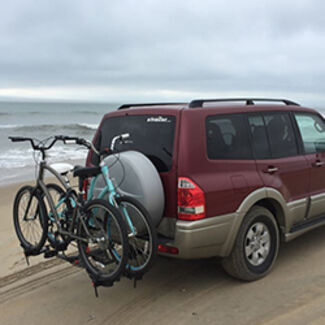
Mike

5/8/2019
After some explaining to the owner of the trailer that none of these bearings were intended for high speed highway miles at least not many hes taken it easy on this ancient trailer. So far, everything works very well, with no grease leaking past seals and all the bearings carrying their weight well.
etrailer had this hard to find bearing in stock. Delivery was as stated. My salesperson McCoy was helpful and knowledgeable. All the components were in one box ant individually wrapped, but fortunately no damage seen. Now the work putting everything back together begins.
Bearing and race were exact match. Good price and fast shipping!

Mark F.

10/3/2016
Working out good!
The serves you have given is out standing, couldn't any better.
I can only comment on one thing.. I was looking for the delivery by the (UPS)
as your Emails had suggested.. The items was sent by (USPS) this is no
problem. I thought UPS had screwed up like several weeks ago.
Now I don't have time to install them bearing right now as I'm cutting
fire wood, but as soon as I can get them installed I'll respond again.
Thanks George..
Best Regards..
Jerry Bush
Exact replacement.
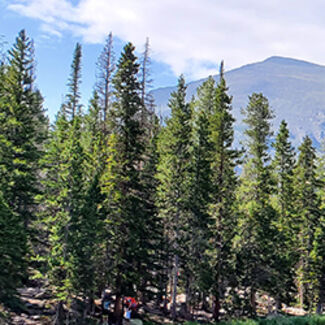
Dave

7/10/2018
No problems, everything is in good working order.
Everything came as expected and on time. I was a bit surprised that, since the order was two angualar bearings, that the bearings weren't wrapped or protected from moisture in any way. In this case, it didn't seem to be an issue.
Shipping was very fast and I am very satisfied with the product.
Bearings look of high-quality and all part numbers were a match to the old bearings,
I am a very satisfied customer and will be ordering all my bearings from this company

Proper fit. Put them through 11 hours of use during the second day.
great shipping, good price , bearing and race are going on a older axle and trailer that I am rebuilding
This race worked fine with the 2788 bearing and installed perfectly
Perfect fit, great price.

Dave M.

2/20/2015
Everything is still working out well! Very satisfied. I will be a return customer for any of my trailer neeeds.
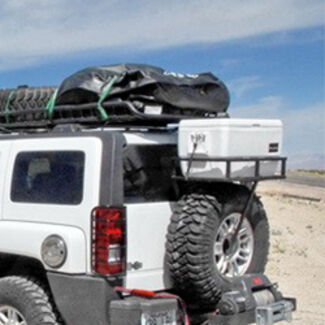
James

1/27/2022
Great
The right part at the right time with excellent delivery and service
very knowledgeable staff , a very large inventory and great customer service equals a great company!
Part recieved accurate and quick. Would buy from again

Still rolling. No complaints
Great price, fast shipping, All in stock parts, great service.. Thanks from the great White North

Perfect fit.

Great
Exact product ordered arrived as promised and at an unbeatable price.
Thank you
Parts fit perfectly and arrived in a timely manner. Excellent experience.
Good quality product, fast shipping
Fit perfect as expected.
races was very good .
See what our Experts say about this Redline Trailer Bearings Races Seals Caps
- To Pick Out Trailer Hub Bearings Does the Hub Have to Be Totally DisassembledI know it's not the news you want to hear, but the only safe recommendation I can make for you would be to find a place you can park your trailer, pull the hubs and get the seals and bearing numbers so we can get you the right parts. I know it's a pain and it leaves you with a trailer stuck on jackstands till you get the right parts but it's the only option. Hexagonal caps that are threaded are typically used on oil bath hubs. I would recommend you at least inspect all the components...
view full answer... - How to Find Replacement Hub for Trailer with Bower 2788 BearingWe do have the Replacement Trailer Hub Bearing # 2788 that installs on a hub using the Race # 2729, but the only hub we've confirmed a fitment with this on an older discontinued hub made for 5.2K axles with a 6 on 5-1/2" bolt pattern. Over the years hubs have mixed and matched bearings so the only way to make sure we get you the correct replacement parts is if you measure the different parts of your trailer spindle and let me know what you found. It would also be helpful to know the weight...
view full answer... - Availability of Bearings 1779 and 2788We have the bearing part # 1779 and the race part # 1729. We also have the race part # 2729 and the bearing # 2788. Since I am not able to determine what seal you need based on your numbers I'd need you to get me the diameter of the spindle where the seal rides as well as the diameter of the hub where the seal installs.
view full answer... - Bearing With 1-1/2 Inch Inner DiameterYou can get a bearing with a 1-1/2 inch inner diameter here, and there are two options, with different outside diameters: - 1-1/2" Inner Diameter, 3" Outer Diameter: Replacement Trailer Hub Bearing # 2788 - 1-1/2" Inner Diameter, 2.563" Outer Diameter: Replacement Trailer Hub Bearing # 29749 If you need the races as well, the correct replacement race for # 29749 is the Race For 29749 Bearing # 29710; for the # 2788 it is the Replacement Race for 2788 Bearing # 2729.
view full answer... - Availability of 1729 Race/1780 Bearing and 2729 Race/2788 BearingWe do indeed offer the # 2729 Race and the # 2788 bearing. We also offer the # 1729 race, but I show it as a match for the # 1779 bearing, which has a .938 inside diameter. We don't carry a 1780 wheel bearing.
view full answer... - Replacement Bearings, Races and Seals for Hub #22834Although the #22834 hub is an older, obsolete trailer hub, we do have the replacement parts you are looking for. From what I have found, this hub uses a # 29031 grease seal. The replacement inner bearing is # 2788 and the outer bearing is # 1779. The races you need are # 2729 and # 1729.
view full answer... - Replacement Parts for Oil Bath Hub with Seal 203034X and Bearing 1779That certainly does appear to be an oil bath hub. The seal number is associated with 1956 to 1959 Studebakers as far as I could find. It looks like the dimensions of the seal are 1.875 inches inner diameter and 3 inches outer diameter. We have one seal that has the dimensions, # 29031, but it is a grease seal, not an oil seal. The bearing # 1779 is associated with race # 1729. They fit hub 22834 which from what I could find is not an oil bath hub. The inner bearing that is associated with...
view full answer... - Availability of Replacement Bearings, Races, and Seal # 1779, # 1729, # 2788, # 2729, # 29031We do have the bearings, races, and a grease seal that seems to match. For the bearings and races you just need to enter the numbers you have given me and they will come up but they are not available in a kit. # 1779 (outer bearing) # 1729 (race for outer bearing) # 2788 (inner bearing) # 2729 (race for inner bearing) I did a cross reference check for a Victor Seal # 49739 and found that it is 1.875 inches inner diameter, 3 inches outer diameter, and is 7/16 inches thick. I would check...
view full answer... - What is the Axle Capacity for an Old Trailer with Hub # 22834The bearing numbers you have provided indicate that you have hub 22834. This hub is no longer made but there are parts for it such as the bearings # 2788 and # 1779 an the races # 2729 and # 1729. The hub is rated for 2,600 pounds which means it fits a 5,200 pound axle.
view full answer... - Replacement Bearings, Races and Grease Seals Old 6 Lug Utility Trailer HubsI couldn't find that seal number for a cross-reference. Based on your manual caliper measurements the Grease Seal # 29031 is a perfect fit. Then you will use the bearing # 2788 and # 1779. If you need the replacement races for these then # 1729 and # 2729 are what you need. I recommend using the 7-Piece Installation Set for Bearings, Races, and Seals # PTW83020 to make removal of your current races and installing the new ones easier.
view full answer... - Finding a Hub for a Very Old Trailer with 6 Lug Bolt Pattern # 1779 inner and # 2788 Outer BearingsI did some research and found that the 2,600 lb Hub, # 22834, takes the # 1779 outer bearing and # 2788 inner bearing and would use the # 29031 grease seal. This hub has a 6 bolt on 5-1/2 inch bolt pattern. This sounds like the hub you have, and replacement parts are available. Along with the parts mentioned above you may need grease caps, # RG04-060, and races, # 1729 and # 2729, to complete parts needed to repair one of your existing hubs. When doing my research I found that no other...
view full answer... - Replacement Brake Assembly, Bearings, Races, and Seal for Old Trailer AxleBased on the bolt pattern and the brake flange on your axle, you will want to start with the Electric Trailer Brake Kit - Self-Adjusting - 12" - Left and Right Hand Assemblies - 5.2K to 7K # AKEBRK-7-SA. Then for your hub drums I recommend reusing your current hubs as we don't have a suitable replacement and using bearings # 2788 and # 1779. Then for a seal I believe # 29031 is the correct fit. If you want to replace the races inside the hub use # 2729 and # 1729 along with the installation...
view full answer... - Availability of Trailer Hub Using Timken # 2788 Inner Bearing and Timken # 1779 Outer BearingI did find a reference to a trailer hub # 22834 that used a # 2788 inner and a # 1779 outer bearing, however I'm sorry to say the hub is obsolete and is no longer being manufactured. The hub has a 6 lug on 5-1/2 inch bolt circle. Although the hub isn't available, we do offer the bearings, the races # 1729 and # 2729 and the grease seal # 29031. If your hub(s) are damaged beyond repair, you'd need to replace the spindles or the entire axle. I can check on the availability of a replacement...
view full answer... - Replacement Bearings 2788 and 1779Bearing # 2788 has an inner diameter of 1.50-inches and fits race # 2729. Bearing # 1779 has an inner diameter of 0.938-inches and fits race # 1729. We do offer all of these bearing and race parts and if you wish you can install new bearings in your current hubs. The idler hub you referenced, part # AKIHUB-655-6-K, uses different bearings that have different dimensions. The bearings in this hub are inner bearing # 25580 (1.75-inch inner diameter) and outer bearing # 15123 (1.25-inch inner...
view full answer... - How Can I Identify an Axle Without a Sticker?Thank you for the pictures! It looks like you've got some sort of square drop axle on your trailer and if you can't find an identifying sticker, I can still help you figure out what you've got so that you can make the swap to electric brakes on your trailer. It looks like you've got 6 bolts on the wheels, which can help narrow down our search, but we'll need to know what size the brakes on the trailer are and if possible, what size (or number) the inner and outer bearings are on the hubs. If...
view full answer...
Do you have a question about this Trailer Bearings Races Seals Cap?
Info for this part was:







At etrailer.com we provide the best information available about the products we sell. We take the quality of our information seriously so that you can get the right part the first time. Let us know if anything is missing or if you have any questions.









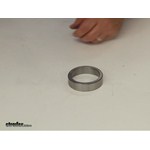















































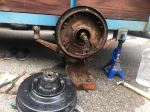
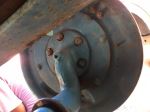
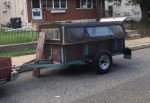



Sierra K.
6/8/2021
Thank you for your review. I believe you mean the grease seal. I have attached a link below:
Helpful Links
s.aspx?qry=grease+seal&furl=-pg-Trailer_Bearings_Races_Seals_Caps-sf-Seals